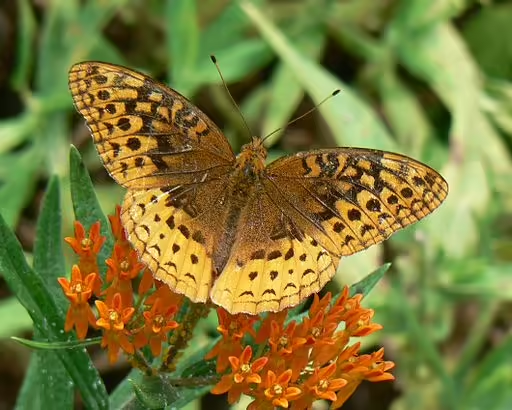Table of Contents for Halbeard-leaf Violet (Viola hastata)
Halberd-leaf Yellow Violet (Viola hastata) is a herbaceous perennial that is native to most of the eastern United States. This plant is a host plant to fritillaries and a number of bees. It is part of the stemless violets and the flowers are yellow in color. They can be found growing in wooded, rocky places with dry to mesic soil.
Taxonomic History of Halberd-leaf Yellow Violet (Viola hastata)

Taxonomy
Halberd-leaf Yellow Violet (Viola hastata) was named and described by Andre’ Michaux, a French botanist, in 1803. It has kept the same name since. This plant is a member of the Violet Family (Violaceae).
Halberd-leaf Yellow Violet Description and Alternative Names

Description
Halberd-Leaf Yellow Violet is a herbaceous perennial that is a stemless violet that grows to 8 inches tall and about 10 inches wide. The alternate, simple, serrate leaves range up to 3 inches in length and about 1-3 inches wide. The leaves have a green and white variegated pattern that is similar to the southern woodland violet. This violet can hybridize with a lot of other violet species.
The flowers are yellow or purple/lavender (NC State Extension) in color and are one of the first violets to bloom in the spring. It blooms in the spring around March to May.
Alternative Names
This plant is also called Halberd-leaved Yellow Violet, Silver-leaved Violet, Spear-leaved Yellow Violet, and Halberdleaf Yellow Violet.
Range and Habitat

Range

This species is native to the eastern United States except for Florida, New Jersey, Delaware, and New England.
Habitat
Halberd-leaf Yellow Violet grows in forested areas and rocky places that have dry to mesic soil.
Insects and Other Wildlife it Supports


Host Species
Violets (Viola spp.) are hosts to a number of fritillary butterflies. This violet is not a host to specific species, but most fritillaries will use it.
Other Wildlife Value
Violets (Viola spp.) are important nectar plants for bees and other insects. Birds and mammals like to eat the seeds or browse the foliage. Like some other violets, this species helps support Andrena bees.
Interesting Facts
The genus name, Viola, is from the Latin name for “sweet-scented flowers.” (Missouri Botanical Garden). It is also known as a symbol of love (Wikipedia).